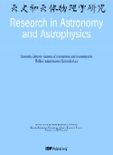
Research in Astronomy and Astrophysics
Scope & Guideline
Charting New Territories in Astrophysical Research.
Introduction
Aims and Scopes
- Observational Astronomy:
The journal publishes research that utilizes various observational techniques across multiple wavelengths, including radio, optical, and X-ray, to study celestial phenomena, such as supernovae, gamma-ray bursts, and the dynamics of galaxies. - Astrophysical Modeling and Simulations:
It includes studies employing theoretical models and simulations to understand complex astrophysical processes, such as star formation, black hole dynamics, and cosmic ray propagation. - Data Analysis and Machine Learning:
The journal encourages submissions that apply advanced data analysis techniques, including machine learning, to handle large astronomical datasets for tasks like classification of celestial objects and anomaly detection. - Cosmology and Galactic Studies:
Research focusing on the large-scale structure of the universe, cosmic evolution, and the dynamics of galaxies, including dark matter and dark energy, is a core area of interest. - Solar and Stellar Physics:
The journal covers studies related to the Sun and other stars, exploring their magnetic activity, flares, and the impact of stellar phenomena on surrounding environments. - Exoplanetary Science:
There is a significant focus on the study of exoplanets, their atmospheres, and the conditions for habitability, utilizing both direct observation and indirect methods.
Trending and Emerging
- Machine Learning Applications in Astronomy:
The use of machine learning for data analysis, classification, and anomaly detection is rapidly increasing, reflecting a broader trend in many scientific fields towards leveraging artificial intelligence for complex data interpretation. - Interdisciplinary Research:
There is a growing trend towards interdisciplinary studies that combine astronomy with fields such as physics, computer science, and environmental science, fostering innovative approaches to solving astronomical problems. - Time-Domain Astronomy:
Research focusing on time-domain astronomy, which studies transient events like supernovae, gamma-ray bursts, and variable stars, is becoming increasingly prominent as new observational technologies enable continuous monitoring. - Astrobiology and Habitability Studies:
An increased interest in astrobiology, particularly studies related to exoplanet habitability and the search for biosignatures, is evident, reflecting a broader societal fascination with the potential for life beyond Earth. - High-Energy Astrophysics:
Research in high-energy astrophysics, including studies on black holes, neutron stars, and cosmic rays, is trending upward, driven by advancements in observational techniques and instruments.
Declining or Waning
- Traditional Spectroscopy:
There has been a noticeable decrease in studies focused solely on traditional spectroscopy methods, as more researchers are integrating spectroscopy with advanced imaging techniques and data analysis methods. - Static Models of Stellar Evolution:
Research employing static models of stellar evolution appears to be waning, giving way to dynamic simulations that better capture the complexities of stellar life cycles and interactions. - Theoretical Explanations for Anomalous Cosmic Phenomena:
Papers that primarily offer theoretical explanations for cosmic anomalies without substantial observational backing are becoming less common, as the field shifts towards more empirical research. - Single-object Studies:
The emphasis on single-object studies, particularly in the context of isolated stars or specific celestial events, is decreasing in favor of broader surveys and comparative studies that provide more comprehensive insights.
Similar Journals
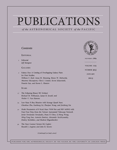
PUBLICATIONS OF THE ASTRONOMICAL SOCIETY OF THE PACIFIC
Pioneering Discoveries in Space and Planetary SciencePublications of the Astronomical Society of the Pacific is a prestigious journal dedicated to advancing the fields of Astronomy and Astrophysics, as well as Space and Planetary Science. Published by IOP Publishing Ltd, this influential journal plays a critical role in disseminating groundbreaking research and innovative findings. With an impressive Q1 ranking in both related categories according to the 2023 metrics, it is recognized among the top journals in its field. As a vital resource for researchers, professionals, and students alike, the journal covers a range of topics relevant to current astronomical research from 1996 to 2024. Although it does not offer open access options, the journal is highly regarded in academic circles, evidenced by its competitive ranking in Scopus—20th in Astronomy and Astrophysics and 26th in Space and Planetary Science. This commitment to excellence ensures that it remains an essential platform for sharing the latest insights in the ever-evolving universe.
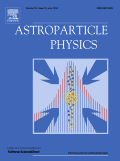
ASTROPARTICLE PHYSICS
Connecting the Dots Between the Cosmos and Particle InteractionsASTROPARTICLE PHYSICS is a premier international journal dedicated to advancing the understanding of the intersection between particle physics, astronomy, and astrophysics. Published by Elsevier, this journal has established itself as a leading source of research insights since its inception in 1992, with a remarkable impact factor positioning it within the Q1 category for Astronomy and Astrophysics for 2023. With a Scopus ranking of 18 out of 90 in its field, representing the top 80th percentile, ASTROPARTICLE PHYSICS serves as an essential platform for disseminating groundbreaking research that influences astrophysical studies and cosmological theories. Researchers and academics have access to a robust collection of peer-reviewed articles that explore various dimensions of astroparticle phenomena, collaborative cosmic investigations, and theoretical advancements. Although not an open-access journal, it provides extensive research coverage accessible to a global audience from its headquarters in Amsterdam, Netherlands, offering a vital resource for those seeking to push the boundaries of knowledge in the realms of astrophysics and particle physics.
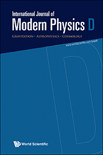
INTERNATIONAL JOURNAL OF MODERN PHYSICS D
Exploring the Cosmos through Rigorous ResearchWelcome to the INTERNATIONAL JOURNAL OF MODERN PHYSICS D, a premier publication dedicated to the advancement of knowledge in the fields of Astronomy and Astrophysics, Mathematical Physics, and Space and Planetary Science. Published by WORLD SCIENTIFIC PUBL CO PTE LTD in Singapore, the journal boasts an impressive impact, being ranked Q2 in Astronomy and Astrophysics and Mathematical Physics, and Q3 in Space and Planetary Science. With a converged publishing timeline from 1996 to 2024, this journal provides a vital platform for researchers and professionals to disseminate their findings, engage with cutting-edge research, and explore emerging ideas in modern physics. Although it operates under a traditional access model, the rigorous peer-reviewed process ensures that only the highest quality research contributes to the collective understanding of our universe. Join us in advancing the frontiers of physics and astronomy!
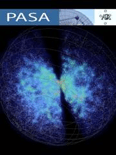
PUBLICATIONS OF THE ASTRONOMICAL SOCIETY OF AUSTRALIA
Elevating Understanding of Celestial Phenomena.Publications of the Astronomical Society of Australia, published by Cambridge University Press, stands as a distinguished platform for advancing knowledge in the realms of Astronomy, Astrophysics, Space, and Planetary Science. Hemmed in the United Kingdom, this journal is recognized for its outstanding contributions, reflected in its status as a Q1 journal in both Astronomy and Astrophysics, along with Space and Planetary Science categories as of 2023. With a solid impact factor, it ranks impressively at #23 within its Scopus category, firmly placing it in the competitive 75th percentile. This publication facilitates open discourse and innovative research from its inception in 1996 to the present year of 2024, providing an essential resource for researchers, professionals, and students eager to deepen their understanding of cosmic phenomena. By embracing rigorous peer-review standards and a commitment to scholarly excellence, the journal not only contributes to the scientific community but also fosters the next generation of astronomical research.

Journal of the Korean Astronomical Society
Fostering Collaboration: Insights from the Heart of Korean AstronomyWelcome to the Journal of the Korean Astronomical Society, an esteemed publication dedicated to advancing the fields of Astronomy and Astrophysics as well as Space and Planetary Science. Established in 1993 and under the reputable auspices of the Korean Astronomical Society, this journal serves as a vital platform for researchers and scholars from South Korea and around the globe to disseminate innovative findings and critical insights. With a commendable Q2 ranking in Astronomy and Astrophysics and a Q3 ranking in Space and Planetary Science, this journal is positioned among the influential voices in its fields, fostering collaboration and knowledge exchange. The journal's rigorous peer-review process ensures that published works contribute significantly to ongoing discussions and developments in astronomical research. While currently not an open-access journal, it remains accessible to the academic community, encouraging readers to stay abreast of the latest advancements in the sciences that elucidate the universe's complexities. Join us in exploring the cosmos through cutting-edge research and scholarly discussion that propels the field forward.

Universe
Exploring the Cosmos, One Discovery at a Time.Universe is a distinguished peer-reviewed journal published by MDPI, specializing in the dynamic fields of Physics and Astronomy. Established in 2015, this Open Access journal has rapidly gained recognition, achieving a prestigious Q1 quartile ranking in its category as of 2023. With its E-ISSN 2218-1997, the journal primarily serves the international scientific community, offering a platform for researchers to disseminate innovative ideas and findings. Based in Switzerland, Universe covers a wide range of topics within astronomy and astrophysics, ensuring that cutting-edge research is accessible to an ever-growing audience. Its commitment to open access principles since its inception allows for unrestricted dissemination of knowledge, fostering a collaborative environment essential for scientific advancement. By aligning its objectives with the promotion of high-quality research and interdisciplinary discourse, Universe stands as a vital resource for academics, professionals, and students aiming to contribute to and engage with the ever-evolving landscape of astronomical research.

JOURNAL OF ASTROPHYSICS AND ASTRONOMY
Connecting Minds to the Universe's Wonders.JOURNAL OF ASTROPHYSICS AND ASTRONOMY, published by the Indian Academy of Sciences, stands as a pivotal resource for researchers and professionals in the fields of astrophysics and astronomy, with a rich history of publication dating back to 1980. This esteemed journal aims to disseminate high-quality research, fostering advancements in how we understand celestial phenomena, space environments, and planetary sciences. With a current Impact Factor that places it in the Q3 category for both Astronomy and Astrophysics and Space and Planetary Science, it maintains a crucial role in the global academic community, particularly within India. Although not an open access journal, its scholarly contributions are vital for both emerging and established researchers striving to push the boundaries of our knowledge in the cosmos. The journal is indexed in Scopus, ranking 56th in Astronomy and Astrophysics and 72nd in Space and Planetary Science, reflecting its ongoing significance and reach in the scientific dialogue.

SPACE SCIENCE REVIEWS
Navigating the Depths of Astrophysics and ExplorationSPACE SCIENCE REVIEWS, published by Springer, is a premier interdisciplinary journal that has been at the forefront of space science research since its inception in 1962. With an impressive impact factor and a distinguished Q1 ranking in both Astronomy and Astrophysics, as well as Space and Planetary Science, it stands as a leading platform for the dissemination of cutting-edge research. The journal encompasses comprehensive reviews covering a diverse array of topics, from cosmic phenomena to planetary exploration, serving as a critical resource for researchers, professionals, and students alike. Although it operates primarily under a subscription model, its commitment to excellence and rigorous peer-review process ensures that each article meets the highest standards of scientific integrity. With its headquarters in the Netherlands, SPACE SCIENCE REVIEWS is positioned strategically to foster global collaboration in the field, making it an invaluable asset for anyone interested in the ever-evolving landscape of space science.
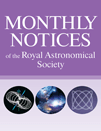
MONTHLY NOTICES OF THE ROYAL ASTRONOMICAL SOCIETY
Unveiling the Mysteries of the Cosmos Since 1913.The MONTHLY NOTICES OF THE ROYAL ASTRONOMICAL SOCIETY (MNRAS), published by Oxford University Press, serves as a premier platform for the dissemination of significant research in the fields of Astronomy, Astrophysics, and Space and Planetary Science. Established in 1913 and with an impressive impact factor reflected in its 2023 Q1 rankings—13th in Earth and Planetary Sciences and 14th in Physics and Astronomy—this journal is renowned for its rigorous peer-reviewed articles, fostering advancements in our understanding of the universe. Researchers, professionals, and students alike benefit from its rich content, which spans a vast array of topics within its scope, from stellar dynamics to planetary formation. While the journal does not currently offer Open Access options, the scholarly contributions published herein are invaluable for pushing the boundaries of contemporary scientific inquiry and ensuring that the latest findings reach an engaged audience globally.

Bulgarian Astronomical Journal
Advancing Knowledge in Astronomy and AstrophysicsThe Bulgarian Astronomical Journal, published by the BULGARIAN ACADEMY OF SCIENCES, INSTITUTE OF ASTRONOMY, serves as a vital platform for the dissemination of research in the field of Astronomy and Astrophysics. With the ISSN 1313-2709 and E-ISSN 1314-5592, this journal has been pivotal in showcasing original studies and advancements in astronomical sciences from 2014 and will continue to do so through 2025. Although categorized in Q4 within the ambit of Astronomy and Astrophysics, it provides essential insights and innovative findings, making significant contributions to the global academic community. Positioned in the lower quartile of Scopus rankings, recognized as #87 out of 90, it offers an opportunity for burgeoning researchers and seasoned professionals alike to engage with emerging ideas and trends in the discipline. While it currently does not feature an open access model, readers and contributors can anticipate a rich exchange of scientific knowledge that fosters collaboration within the astronomy community.